If you're serious about cooking, a built-in integrated cooker hood is a game-changer for your kitchen. These hoods blend right into your cabinetry, keeping things sleek and stylish while effectively removing smoke and odors. You’ll enjoy a fresher cooking environment, and cleanup becomes a breeze with the right ventilation in place.
Built In Integrated Cooker Hoods
Discover the perfect blend of style and functionality for your kitchen with our sleek built-in integrated cooker hoods
Product List
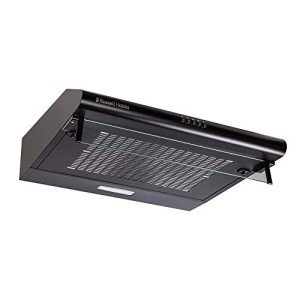
Black 60cm Visor Hood
Russell Hobbs
Product Review Score
4.49 out of 5 stars
52 reviews$92.80 $76.88
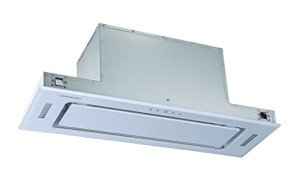


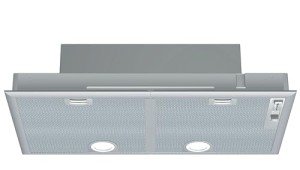
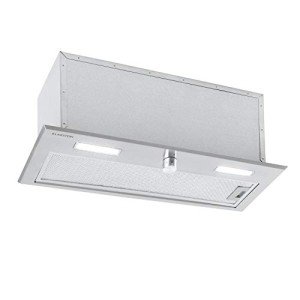
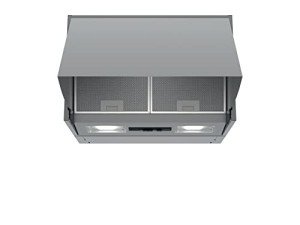
Built-In Integrated Cooker Hoods: A Complete Guide
When designing or upgrading a modern kitchen, functionality and aesthetics go hand in hand. One appliance that plays a surprisingly significant role in both areas is the cooker hood. Among the various options available, built-in integrated cooker hoods are becoming increasingly popular. They combine sleek design with efficient performance, making them a perfect solution for homeowners who want a clutter-free, stylish kitchen without compromising on ventilation.
This detailed guide explores built-in integrated cooker hoods, their benefits, considerations, types, and frequently asked questions. By the end, you’ll have all the information you need to decide whether an integrated cooker hood is right for your kitchen.
What is a Built-In Integrated Cooker Hood?
A built-in integrated cooker hood is a kitchen ventilation system designed to fit seamlessly within cabinetry above a cooking surface. Unlike conventional chimney hoods or wall-mounted models, integrated cooker hoods are hidden behind cabinet doors or panels, giving the kitchen a streamlined, minimalist appearance.
When in use, the hood efficiently extracts or recirculates cooking vapors, odors, and smoke. When not in use, it blends invisibly into the cabinetry—ideal for those who prefer a clean, modern kitchen aesthetic.
Key Benefits of Built-In Integrated Cooker Hoods
Investing in an integrated cooker hood offers several benefits beyond aesthetics:
-
Space-Saving Design
Perfect for small or compact kitchens where every inch of space matters. -
Seamless Appearance
Concealed behind cabinet doors for a consistent and elegant kitchen design. -
Quiet Operation
Many models are designed for minimal noise, making them less intrusive during cooking. -
Improved Air Quality
Removes grease, odors, and steam effectively, ensuring a fresh kitchen environment. -
Customizable Options
Available in different sizes, power ratings, and styles to fit various kitchen layouts.
Features to Look for in an Integrated Cooker Hood
When shopping for a cooker hood, consider the following features to ensure it meets your specific needs:
- Extraction Rate: Determines how effectively the hood clears kitchen air. Higher rates are better for larger kitchens.
- Noise Levels: Measured in decibels (dB). Look for models around 50–60 dB for quieter operation.
- Lighting: Many hoods come with LED or halogen lights to illuminate the cooking area.
- Filters:
- Grease Filters (usually metal, easy to clean)
- Carbon Filters (for recirculating models, removing odors)
- Energy Efficiency: Look for energy-rated models to reduce electricity costs.
- Ease of Cleaning: Dishwasher-safe filters and removable panels simplify maintenance.
Types of Integrated Cooker Hoods
| Type | Description | Best For |
|---|---|---|
| Canopy Hoods | Mounted underneath a cabinet; compact and discreet. | Smaller kitchens with limited space. |
| Sliding/Telescopic Hoods | Pull-out design; slides forward when in use, tucks away when not needed. | Homeowners wanting flexibility and subtlety. |
| Downdraft Extractors | Rise from the countertop near the hob; retract when not in use. | High-end, modern kitchens with minimalist design. |
| Built-In Chimney Hoods | Integrated but slightly more visible; powerful extraction capability. | Larger kitchens requiring strong ventilation. |
Pros and Cons of Built-In Integrated Cooker Hoods
| Pros | Cons |
|---|---|
| Seamless, minimalist design | May offer lower extraction rates than larger wall-mounted models |
| Saves space in compact kitchens | Installation can be more complex and costly |
| Quiet operation available in many models | Limited visibility of controls (hidden inside cabinets) |
| Customizable options and finishes | Carbon filters require regular replacement (recirculating models) |
| Energy-efficient models available | Not ideal for very large kitchens with heavy cooking demands |
Installation Considerations
Before purchasing a built-in integrated cooker hood, consider the following:
- Kitchen Layout: Ensure your cabinet structure can accommodate the hood’s dimensions.
- Ducted vs Recirculating: Decide whether you want an extraction model (venting air outside) or a recirculating one (filters air and returns it to the room).
- Professional Installation: Integrated hoods may require specialist fitting to properly align with cabinetry.
- Height Guidelines: Generally, hoods should be installed 65–75 cm above the cooking surface, depending on the manufacturer’s recommendations.
- Electrical Connection: Check if additional wiring or outlets are needed.
Maintenance Tips
To keep your cooker hood functioning optimally:
- Clean grease filters every 1–3 months (dishwasher-friendly in most cases).
- Replace carbon filters every 6–12 months if using a recirculating system.
- Wipe the hood’s surfaces regularly to avoid buildup of grease and dust.
- Schedule periodic servicing for high-use hoods to extend their lifespan.
Buying Guide: Choosing the Right Integrated Cooker Hood
When shopping for a cooker hood, consider:
- Kitchen Size: Larger kitchens need higher extraction power.
- Cooking Habits: Frequent frying and grilling require more powerful hoods.
- Design Preferences: Decide between a hidden design (canopy/sliding) or a statement piece (downdraft).
- Budget: Integrated hoods range from affordable models to premium luxury designs.
- Brand & Warranty: Trusted brands often provide better durability, performance, and aftersales support.
FAQ: Built-In Integrated Cooker Hoods
Q1: Do all integrated cooker hoods require external ducting?
No. Some models are ducted (air is vented outside), while others are recirculating (air is filtered and returned into the kitchen). The choice depends on your kitchen’s layout and installation feasibility.
Q2: How often should I clean the filters?
Metal grease filters should be cleaned every month or two, depending on usage. Carbon filters for recirculating models typically need replacing every 6–12 months.
Q3: Are integrated cooker hoods powerful enough for heavy cooking?
Yes, but this largely depends on the model. For frequent frying or strong odors, choose a hood with a high extraction rate (at least 400–700 m³/hr).
Q4: Can I install a cooker hood myself?
Some models are DIY-friendly, but integrated hoods usually require professional installation to align with cabinetry and ensure proper ventilation.
Q5: Are integrated cooker hoods noisy?
Many modern models are designed for quiet operation, typically producing 50–65 dB of noise at standard settings. High-power settings may be louder.
Final Thoughts
Built-in integrated cooker hoods are an elegant solution for those who value a sleek kitchen design without sacrificing functionality. They offer effective air purification, save space, and seamlessly blend into the kitchen’s overall aesthetic. However, it’s essential to select a hood that matches your cooking style, kitchen size, and installation requirements. By considering factors such as extraction rate, noise levels, and filter maintenance, homeowners can find an integrated cooker hood that enhances their kitchen experience for years to come.
Whether you’re renovating your kitchen or designing one from scratch, a built-in integrated cooker hood is an investment that balances style and practicality.